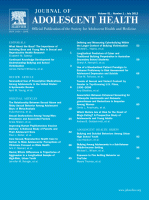Abstract:
Purpose: Because popular media such as movies can both reflect and contribute to changes in cultural norms and values, we examined gender differences and trends in the portrayal of sexual and violent content in top-grossing films from 1950 to 2006.
Methods: The sample included 855 of the top-grossing films released over 57 years, from 1950 to 2006. The number of female and male main characters and their involvement in sexual and violent behavior were coded and analyzed over time. The relationships between sexual and violent behavior within films were also assessed.
Results: The average number of male and female main characters in films has remained stable over time, with male characters outnumbering female characters by more than two to one. Female characters were twice as likely as male characters to be involved in sex, with differences in more explicit sex growing over time. Violence has steadily increased for both male and female characters.
Conclusions: Although women continue to be underrepresented in films, their disproportionate portrayal in more explicit sexual content has grown over time. Their portrayal in violent roles has also grown, but at the same rate as men. Implications of exposure to these trends among young movie-going men and women are discussed.


